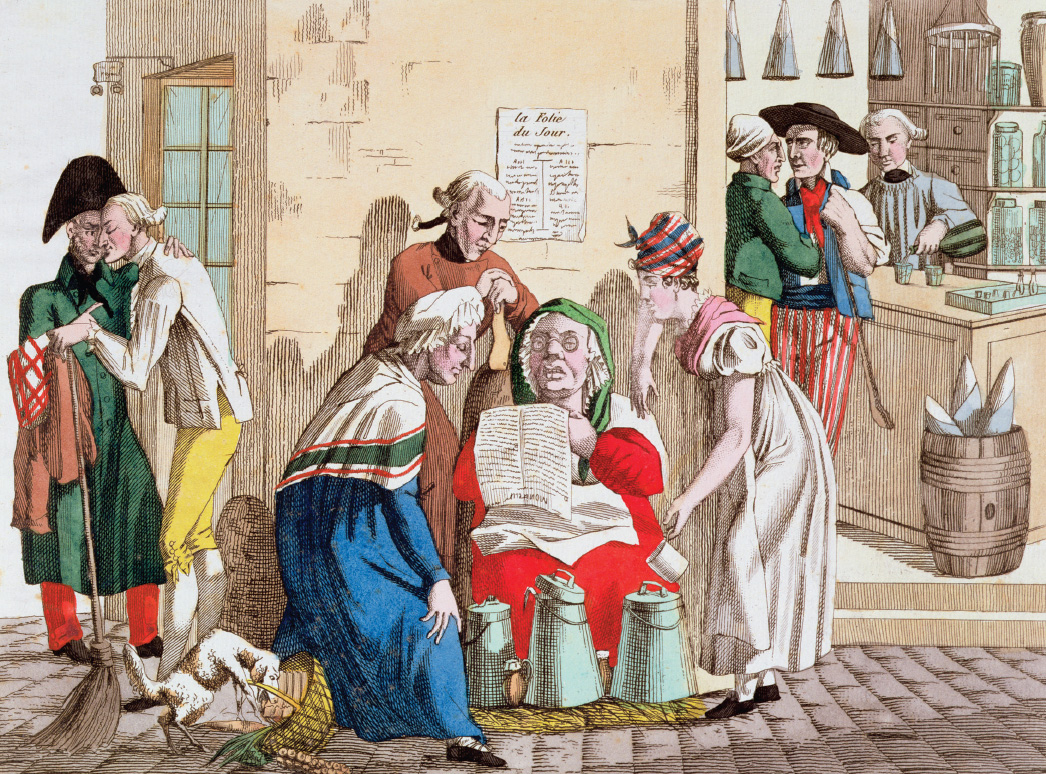A History of Western Society: Printed Page 589
A History of Western Society, Value Edition: Printed Page 599
New Foods and Appetites
At the beginning of the eighteenth century, ordinary men and women depended on grain as fully as they had in the past. Bread was quite literally the staff of life. Peasants in the Beauvais region of France ate two pounds of bread a day, washing it down with water, wine, or beer. Their dark bread was made from roughly ground wheat and rye — the standard flour of the common people. Even peasants normally needed to buy some grain for food, and, in full accord with landless laborers and urban workers, they believed in the moral economy and the just price. That is, they believed that prices should be “fair,” protecting both consumers and producers, and that just prices should be imposed by government decree if necessary. When prices rose above this level, they often took action in the form of bread riots (see “Famine and Economic Crisis” in Chapter 15).
The rural poor also ate a quantity of vegetables. Peas and beans were probably the most common. Grown as field crops in much of Europe since the Middle Ages, they were eaten fresh in late spring and summer. Dried, they became the basic ingredients in the soups and stews of the long winter months. In most regions other vegetables appeared on the tables of the poor in season, primarily cabbages, carrots, and wild greens. Fruit was mostly limited to the summer months. Too precious to drink, milk was used to make cheese and butter, which peasants sold in the market to earn cash for taxes and land rents.
The common people of Europe ate less meat in 1700 than in 1500 because their general standard of living had declined and meat was more expensive. Moreover, harsh laws in most European countries reserved the right to hunt and eat game, such as rabbits, deer, and partridges, to nobles and large landowners. Few laws were more bitterly resented — or more frequently broken — by ordinary people than those governing hunting.
The diet of small traders and artisans — the people of the towns and cities — was less monotonous than that of the peasantry. Bustling markets provided a substantial variety of meats, vegetables, and fruits, although bread and beans still formed the bulk of such families’ diets. Not surprisingly, the diet of the rich was quite different from that of the poor. The upper classes were rapacious carnivores, and a truly elegant dinner consisted of an abundance of rich meat and fish dishes laced with piquant sauces and complemented with sweets, cheeses, and wine in great quantities. During such dinners, it was common to spend five or more hours at table, eating and drinking and enjoying the witty banter of polite society.

Patterns of food consumption changed markedly as the century progressed. Because of a growth of market gardening, a greater variety of vegetables appeared in towns and cities. This was particularly the case in the Low Countries and England, which pioneered new methods of farming. Introduced into Europe from the Americas — along with corn, squash, tomatoes, and many other useful plants — the humble potato provided an excellent new food source. Containing a good supply of carbohydrates, calories, and vitamins A and C, the potato offset the lack of vitamins in the poor person’s winter and early-spring diet, and it provided a much higher caloric yield than grain for a given piece of land. After initial resistance, the potato became an important dietary supplement in much of Europe by the end of the century.
The most remarkable dietary change in the eighteenth century was in the consumption of commodities imported from abroad. Originally expensive and rare luxury items, goods like tea, sugar, coffee, chocolate, and tobacco became dietary staples for people of all social classes. With the exception of tea — which originated in China — most of the new consumables were produced in European colonies in the Americas. In many cases, the labor of enslaved peoples enabled the expansion in production and drop in prices that allowed such items to spread to the masses.

Why were colonial products so popular? Part of the motivation for consuming these products was a desire to emulate the luxurious lifestyles of the elite. Having seen pictures of or read about the fine lady’s habit of “teatime” or the gentleman’s appreciation for a pipe, common Europeans sought to experience these pleasures for themselves. Moreover, the quickened pace of work in the eighteenth century created new needs for stimulants among working people. (See “Primary Source 18.3: A Day in the Life of Paris.”) Whereas the gentry took tea as a leisurely and genteel ritual, the lower classes drank tea or coffee at work to fight monotony and fatigue. With the widespread adoption of these products (which both turned out to be mildly to extremely addictive), working people in Europe became increasingly dependent on faraway colonial economies and enslaved labor. Their understanding of daily necessities and how to procure those necessities shifted definitively, linking them to global trade networks they could not comprehend or control.